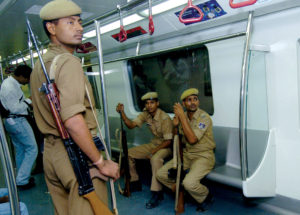It was not an action that could attract the attention of cricket lovers. Rather, it was a simple copybook leg-spin action without the mix of any dance like Pakistan’s Abdul Qadir.
That’s how Shane Warne spread the art of wrist spin to a new generation over the next decade-and-a-half.
The result was in front of everyone. Every budding cricketer wanted to copy Warne when it came to bowling because it seemed simple. The art of bowling leg-spin, which used to look like a bit of a challenge, suddenly became so much fun for all the kids around the world. That was the charisma of Warnie, the magic.
Warne was a blessing to Australian cricket. Not a single recognised leggie emerged from this country in the three decades after Richie Benaud retired in 1964. In fact, the golden legacy of Clarrie Grimmet, Bill O’Reilly, and Benaud was on the brink of extinction.
Warner showed that flight and control from the beginning of his career in 1992, even though it turned out to be a disastrous debut for him against none other than the touring Indian side. At 23, Warne’s baptism started with some lusty hitting by then Indian opener Ravi Shastri.
In his first two Tests, which came against spin masters like Dilip Vengsarkar, Mohammad Azharuddin, Shastri and Sachin Tendulkar, Warne conceded 228 runs for just one wicket to Shastri in his spell of 68 overs. That was a disaster for sure, and Warne had doubts over his future as a leggie at an international career.
Then came that moment at the MCG after 11 months when he first announced his arrival at the international level. In the second innings, Warne wrapped up the West Indians’ batting with a seven for 52.
While chasing a target of 359 on a worn-out pitch on Day Five, Richie Richardson and Phil Simmons gathered 134 runs for the second wicket while launching a counterattack. It was when the Australians were looking helpless that Warne came up with a beauty to remove the Windies captain just before lunch.
There was no looking back as he picked five more in the next session to take a 1-0 lead in the series. Well bowled, Warnie… the words of appreciation from behind the wickets were heard loud and clear by everyone in the stadium. And that’s how he earned his first man-of-the-match award, along with the much-needed confidence to stay afloat at the highest level.
Ask former England skipper Mike Gatting about that “ball of the century” that foxed him completely during the 1993 Ashes. In making his Ashes debut, Warne’s very first ball, bowled outside leg stump, spun so much that it took Gatting’s off stump. The whole world was mesmerised and so was the world’s leading batter, Gatting, who could never recover from that extraordinary flip.
In his long career, the Englishman obviously had never witnessed any ball ever done, so much of it was talked about between the 22 yards. For the record, no other ball has received as much attention since then.
Warne finished the six-match series with a magnificent haul of 34 wickets, including a best of five for 82. In the years to come, the magical wrist-spinner picked up a staggering 195 wickets at an average of 23.25 in the six Ashes series of 36 Tests.
Flawed genius
Leg-spin is surely a difficult art to master. It requires control of both the wrist and the arc that the arm follows. And Warnie was the master of all while he was inside the ground.
Once out, the “Wizard of Oz” was as flawed or colourful as football geniuses George Best and Diego Maradona. He could have sold his storey of “I drank a bit, I smoked a bit, and I bowled leg-spin” to anyone in Hollywood.
Just like a drunken Best was asked to leave the Manchester United dressing room in 1974 before an FA Cup game against Plymouth, and Maradona was thrown out of the 1994 World Cup for banned drug use, Warne, too, was expelled from the 2003 World Cup after failing a dope test.
The only difference was that Best and Maradona used their feet like a magic wand, but Warne weaved magic through his wrist and fingers. At the height of his career, only Warne had the guts to call his coach, John Buchanan’s coaching methods “verbal diarrhoea”.
In fact, the Australian wizard actually didn’t require all those teachings and coaching methods. His simple bowling run-up of seven steps was enough to create a web around any great batsman in the world. His sliders used to travel horizontally to the ground, his zooters would drift into batters, and his top-spinners would hold their line at an amazing pace.
Warne was a constant headline grabber with his love for partying, getting banned for taking a diuretic and forging deals with bookmakers. He dated actress Elizabeth Hurley, played poker, and was also a witty television commentator.
He was different from all the other spinners of his era. If Qadir’s disco dance was a thrill to watch, Anil Kumble’s high-arm flippers were difficult to handle and Muthiah Muralitharan’s off-spin was difficult to judge, then Warne was a wholesome combination of sheer natural talent and magic to enthral the cricket audience.
In 2005, Warne virtually ruled the cricketing world by taking 96 wickets in 15 Tests at an average of 22.02, which is still a record. Overall, his feat of 708 wickets in 145 Tests will be difficult for anyone to follow.
The legend lives on
Warne started off as a football player with the Australian Football League. It was a freak accident that left his leg in plaster and gave him a chance to strengthen his arms and wrists during this period.
At a time when the focus was on the West Indian pace battery, Warne’s skills brought attention back to the art of spin. Warne retired from international cricket in 2007, but then came back to play for Rajasthan Royals in the inaugural season of the Indian Premier League in 2008.
He led his team to the title even though there were no big stars in it. It was widely debated after this triumph that “Warne was one of the best captains Australia could have ever had but never did”.
Warne loved his paradise destinations. His last tweet was a tribute to another Aussie great, legendary wicket-keeper Rod Marsh, from Thailand, on the same day he died later at the young age of 52.
In his death too, Warnie bowled the cricket world around our legs once more!
Monetising Warne’s career
● Warne signed a $300,000-a-year contract with Nine Network as a commentator in 1994.
● By 1999, he signed a five-year deal with Nike worth $1 million, along with a $200,000 deal with Nicorette to quit smoking and endorsements for everything from Oakley sunglasses ($200,000 a year) to Just Jeans ($80,000).
● In 2003, Cricket Australia reportedly paid him around $400,000 as a retainer plus $11,000 per Test.
● In 2005, media baron Kerry Packer cancelled his nine-month contract amid a string of high-profile sex scandals.
● By the time he retired in 2007, he was back making $1.5 million a year in sponsorship deals.
● Warne was netting about $1.5 million a year from commentary and TV appearances.
● He got a $2 million fee to appear in the 2016 season of Ten’s reality TV show “I’m a Celebrity”.
● In the IPL, he received a $657,000 salary and a 3% stake worth approximately $10 million (as of July 2021, when the franchise was valued at $340 million).
For more stories that cover the ongoings of Delhi NCR, follow us on:
Instagram: https://www.instagram.com/thepatriot_in/
Twitter: https://twitter.com/Patriot_Delhi
Facebook: https://www.facebook.com/Thepatriotnewsindia





